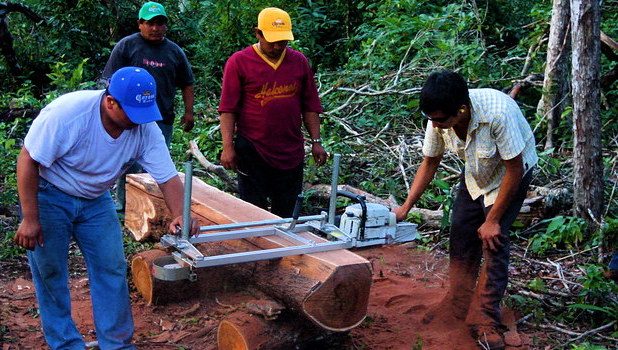As many Survival Blog readers remember JWR, and other knowledgeable sources, have been recommending various ‘tangible’ investments for several years. While I am not an expert on anything, I study various reports which I consider applicable to my lifestyle. The Institute for Supply Management issued a report which got my attention:
“Things are now out of control. Everything is a mess, and we are seeing wide-scale shortages.”
Bank of America’s Chief Investment Officer, Michael Hartnett, said: “Our worldwide supply chain, and ability to provide products and services to you, is being significantly impacted by increased prices resulting from labor and raw material shortages, escalating raw material prices, manufacturing delays and transit interruptions. Stated directly, our costs are increasing and are much more volatile than in the past.”
“Supply chains are depleted; inventories up and down the supply chain are empty. Lead times increasing, prices increasing, [and] demand increasing.”
“The coronavirus [COVID-19] pandemic is affecting us in terms of getting material to build from local and our overseas third- and fourth-tier suppliers. Suppliers are complaining of [a lack of] available resources [people] for manufacturing, creating major delivery issues.”
“Prices are rising so rapidly that many are wondering if [the situation] is sustainable.”
Source: ISM World
Last year I had a CD mature, which I did not renew. Instead, I put the proceeds in a safe place and made a list of tangible investments that I felt would benefit the farm. I had in mind developing a few more strings of income and expanding our tiny cottage business.
On a farm you are always building and repairing something. If you have good equipment and tools, the jobs are done faster and (usually) more safely than just using body muscle power. If you get hurt on a farm, dozens of chores don’t get done and everything suffers.
A Mid-Size Tractor
The second year on the farm I purchased a mid-sized tractor and a couple of basic implements. The end of last year I ordered more implements that could expand the usefulness of the tractor. My son uses the tractor for small jobs for homesteads nearby, such as digging trenches, holes for fruit trees using the backhoe attachment and fence posts with the auger attachment, tilling gardens, leveling farm roads with the box blade, moving dirt and gravel, bush-hogging and pushing over small trees, and so on. He charges by the job and we split the income; I keep half for maintenance expenses. FYI, I purchased the recent implements from Titan Attachments (palletforks.com) and I’m pleased with their services.
Portable Sawmills
After our last building project, when lumber prices had increased by 45%, we investigated portable sawmills. Once the brand and model were decided, I placed the order for the sawmill and found there was a three month lead time. By the time the mill was delivered, the salesman told me the lead time was 6 to 7 months for delivery, partly because of difficulty getting raw materials and partly because of increased demand. As I write this, lumber costs have gone up to 180%. (Sources: Lesprom and Fortune.)
Our plan for the sawmill is to harvest some of our forested acreage to mill 6x6x12, 4x4x10, 2x4x8 and plank boards for use instead of plywood (which is going for $28-$32 a sheet in our location). This wood will be used for two new feed sheds, pig and goat shelters and repair of our cages and coops. Next year we may take a couple of small orders for neighbors, but right now we are still in a learning mode with the mill.
This year I replaced the propane rental tank by purchasing a 500-gallon tank for the house since it is more economical to own your tank. I have a propane HVAC and a small indoor wall heater, a kitchen range and a water heater that also run on propane. I purchase the propane on contract each year and it runs around $1.40 per pound. I use around 350 to 400 pounds a year. My plan is to purchase another 500 gal tank later this summer.
Our Kit-Built Greenhouse
A year and a half ago, I purchased a greenhouse kit from Farmtec/Clearspan. The kit was for a 20’x20′ hoop house since my location normally has mild winters. We put the building together ourselves according to the directions. We added some extra bracing and screws since we get thunderstorms and tornadoes in our area. This past winter we experimented with using propane heaters hooked to small propane containers to keep the temperature above freezing inside. We had cool weather vegetables growing such as collard greens, radishes, cabbages, broccoli, and our dwarf fruit trees inside. One heater worked well until the temps plummeted to below freezing (18°F) when we added a second heater. The two worked well (down to 0°F) until we ran out of propane during an ice storm which closed the roads and bridges so we could not get any refills.
That storm triggered my investing in a 250-gallon tank for the greenhouse. Since the greenhouse is not accessible by the propane truck, my son built a wooden cradle that he can pick up with the tractor forks. With that, he can move the tank to a point where the propane truck hoses will reach. I figured the tank will only need filling in alternating years, if temperatures only fluctuate within 10°F of what we had this past winter.
Summarizing, my tangible investments for the farm were last year’s greenhouse investment, and this year additional implements for the tractor, two propane storage tanks, and a sawmill to process our own lumber. I feel they will provide a Return On Investment (ROI) within two to three years.
I hope each of you doing well and preparing for the difficult times ahead. My prayers go out to those dear blog friends needing comforting and encouragement. – Animal House










